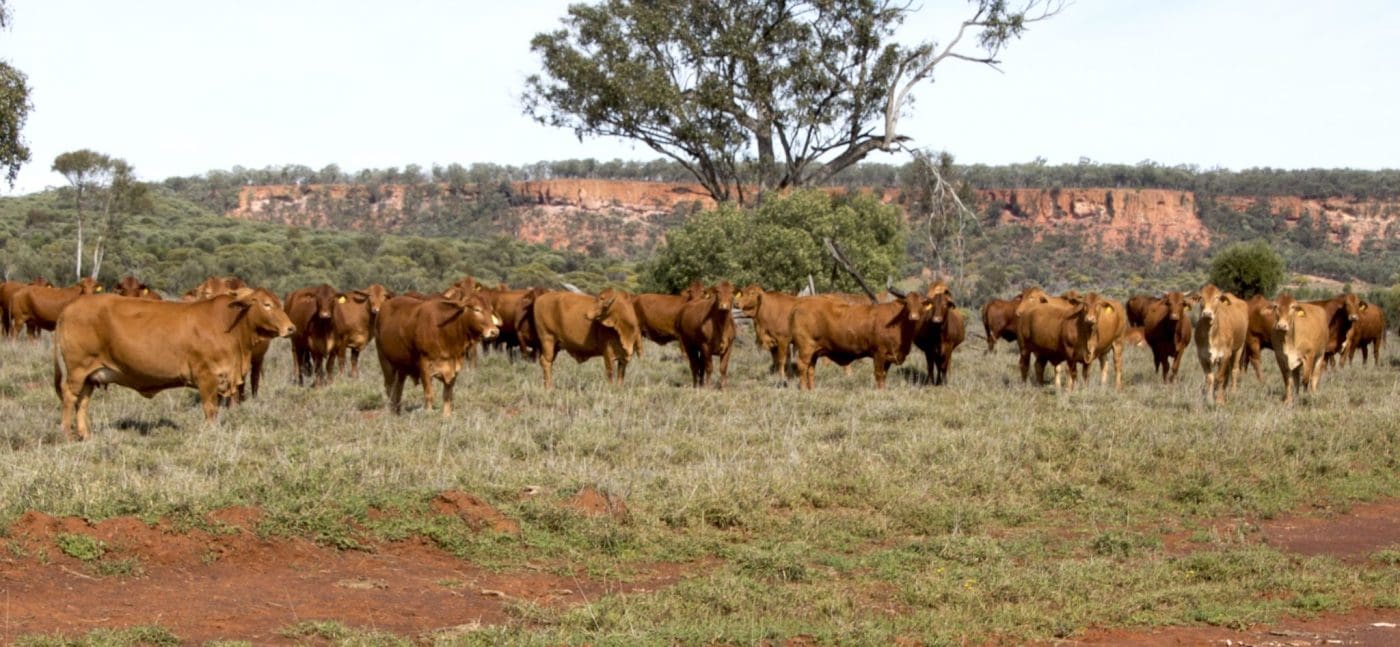
Droughtmaster registered breeders on Valera Vale, one of the first tropically-adapted bull producers to include Genomic Breeding Values in its catalogue
THE CashCow Project conducted across Northern Australia has resulted in many new understandings of the factors that contribute to successful beef production.
The results of the project not only improved understanding of the variation in performance between herds and environments, but also helped to explain those factors. A key outcome has been the ability to define what is realistically achievable for production across broad country types.
Considering what is reasonably achievable is a useful guideline for any system, let alone for the four very different environments analysed in CashCow.
The project analysed performance from the lowest quarter (described as the 25th percentile) to the best performance (the 75th percentile). The 75th percentile represents the performance of the top 25pc of producers who were involved in the CashCow project.
Putting this into some guidance for achievable performance effectively means considering areas where producers can make some significant improvements that will reflect in greater production and productivity.
While there are a range of areas that CashCow has identified, the opportunities to increase the number of animals that are pregnant within four months of calving (P4M) represents a major opportunity.
The use of P4M as an enterprise benchmark comes down to its use as an indicator of the probability of weaning a calf in consecutive years. The project found that the median range for P4M in mature cows ranged from 68-77pc across all broad country types in Northern Australia, with the exception of the northern forest where the median was only 17pc.
However in first lactation cows, median rates in all country types were less than 50pc and down as low as 11pc in the Northern Forest.
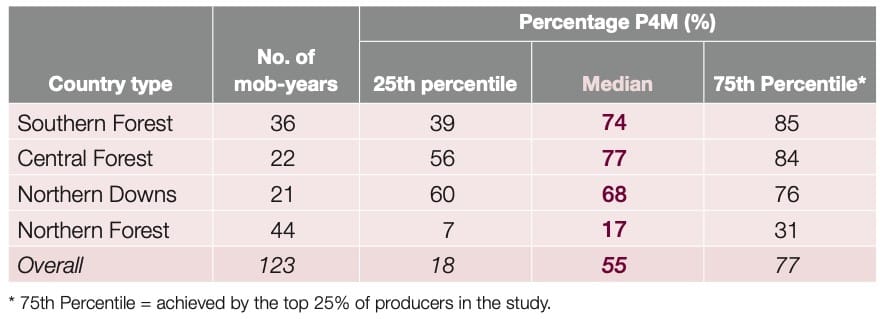
Mature & Aged Cows P4M (source: Technical synopsis: CashCow findings Insights into the productivity and performance of northern breeding herds)
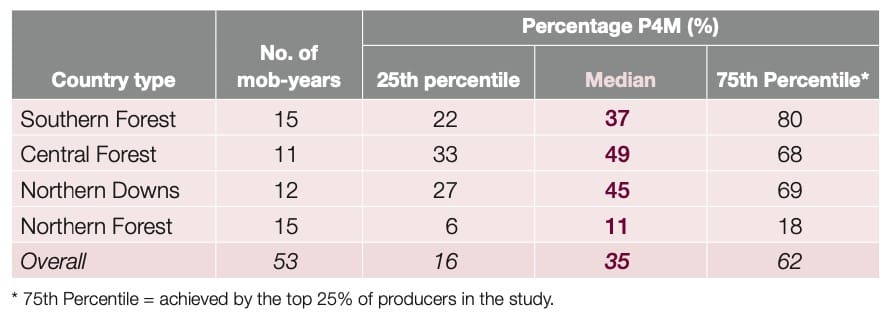
First lactation cows P4Mpc (source: Technical synopsis: CashCow findings Insights into the productivity and performance of northern breeding herds)
There are numerous factors in which P4M can be impacted in any herd. The main factors identified as accounting for at least some of the variation included:
- cow age class
- previous calving period
- body condition score (BCS) (at July-September)
- body condition change (from July-September to February–April)
- nutritional measures of protein and P status
- Brahman content
- seroprevalence (positive blood test) of Pestivirus (bovine viral diarrhoea virus).
In considering the performance (and phenotype) of any animal, ultimately the Performance (P) is the result of the interaction of Genetics (G) + Environment (E). In the case of the factors impacting P4M most of these are easily identified as being environmental (E) effects.
Genomic breeding values
However there is certainly a role for genetics in this context, as there are opportunities for producers to identify animals which are genetically superior for this trait.
The release of Genomic Breeding Values (as described earlier in this Beef Central article) has provided greater clarity for breeders who are keen to identify and offer sires with greater genetic merit for this trait as well as for commercial producers who are looking for additional methods to select replacements.
From season to season, it is possible that there are animals that can easily achieve the Pregnant in 4 months (P4M) target. However for producers considering their own herd and performance in light of cash cow findings, using genetics as a factor in addressing this key area of enterprise productivity does make some sense.
Early adopter
One tropically adapted seedstock producer taking the opportunity to use genomics to both better improve their selection process and provide clients with clear data on the genetic merits of bulls is Valera Vale Droughtmasters, near Augathella.
The stud’s on-farm sale this week is the first within the Droughtmaster breed to provide Genomic Breeding Values for all catalogue listings.

In particular, Valera Vale’s focus on the value of P4M as an indicator for long term improvement does demonstrate the way producers can use information to make longer-term changes to improve their own enterprise profitability.
Stud principal Michael Flynn refers to the value of Genomic Breeding Values in his sale catalogue.
“We can expect a 2pc improvement in the herd every year by incorporating genomic data into our selection criteria,” he tells clients.
“This improvement is cumulative, so in ten years’ time, the herd will be 20pc better for the selected trait than it is today.”
In the case of looking to lift rates of cows and first lactation females successfully meeting the P4M target, this additional gain shouldn’t be overlooked.
And while it isn’t the only factor to be identified by CashCow, having the option to select sires to build long-term and cumulative genetic change while also addressing the environmental would be an effective way for many herds across the north.
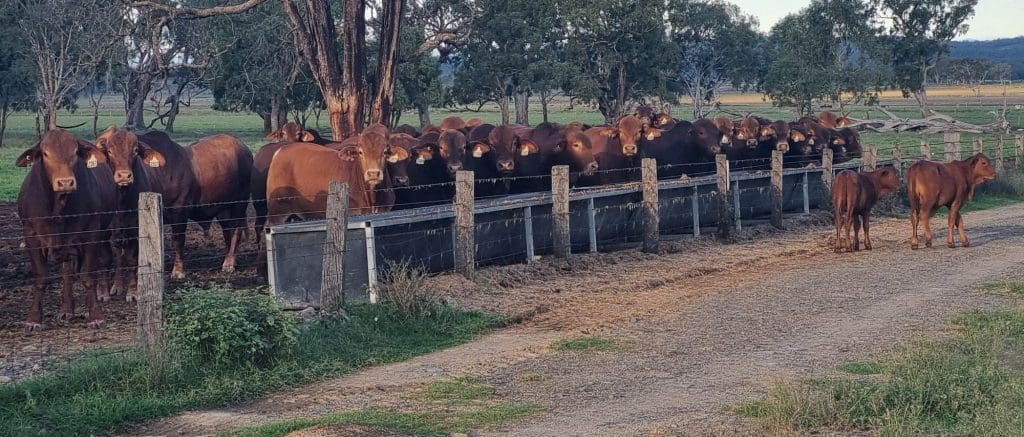
Valera Vale’s bull feeding depot near Warwick
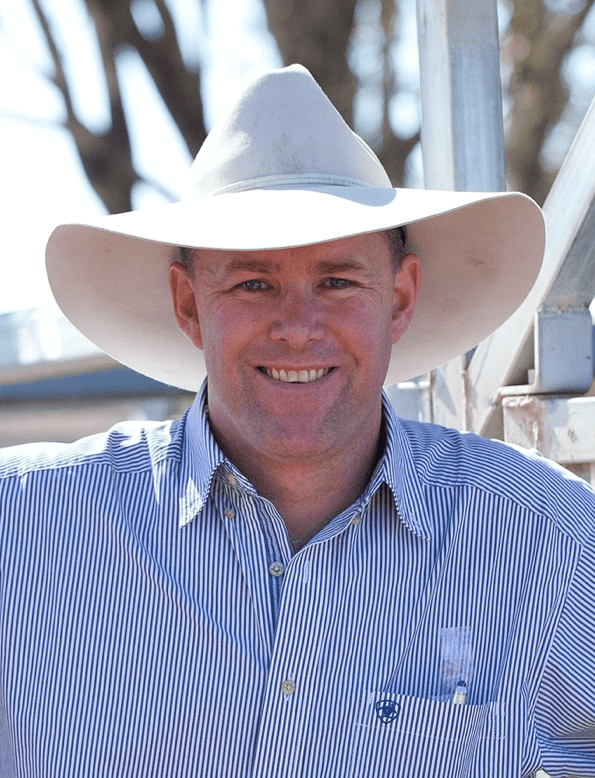 Alastair Rayner is the Principal of RaynerAg, an agricultural advisory service based in NSW. RaynerAg is affiliated with BJA Stock & Station Agents. He regularly lists and sell cattle for clients as well attending bull sales to support client purchases. Alastair provides pre-sale selections and classifications for seedstock producers in NSW, Qld, and Victoria. He can be contacted here or through his website www.raynerag.com.au
Alastair Rayner is the Principal of RaynerAg, an agricultural advisory service based in NSW. RaynerAg is affiliated with BJA Stock & Station Agents. He regularly lists and sell cattle for clients as well attending bull sales to support client purchases. Alastair provides pre-sale selections and classifications for seedstock producers in NSW, Qld, and Victoria. He can be contacted here or through his website www.raynerag.com.au

HAVE YOUR SAY